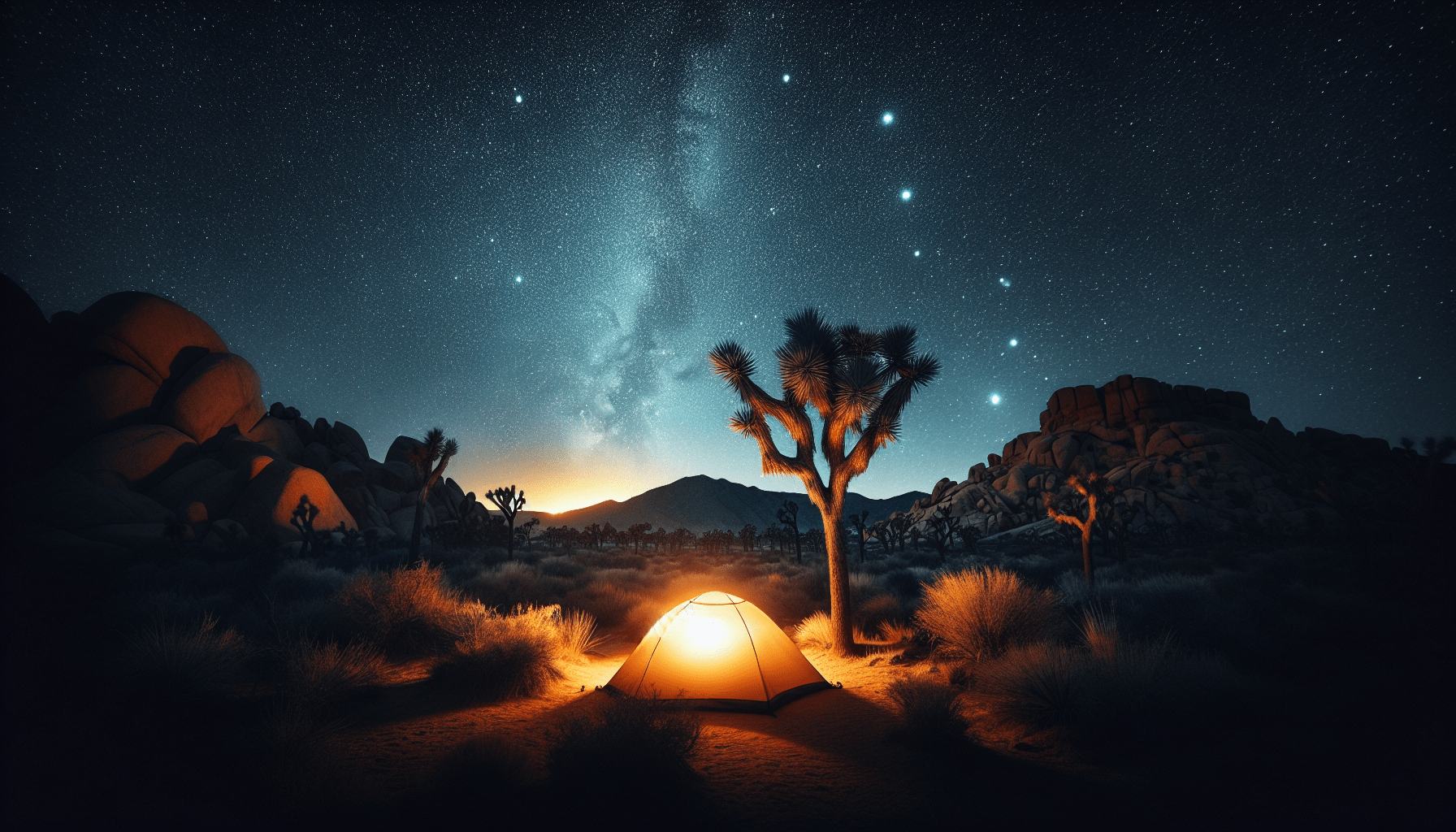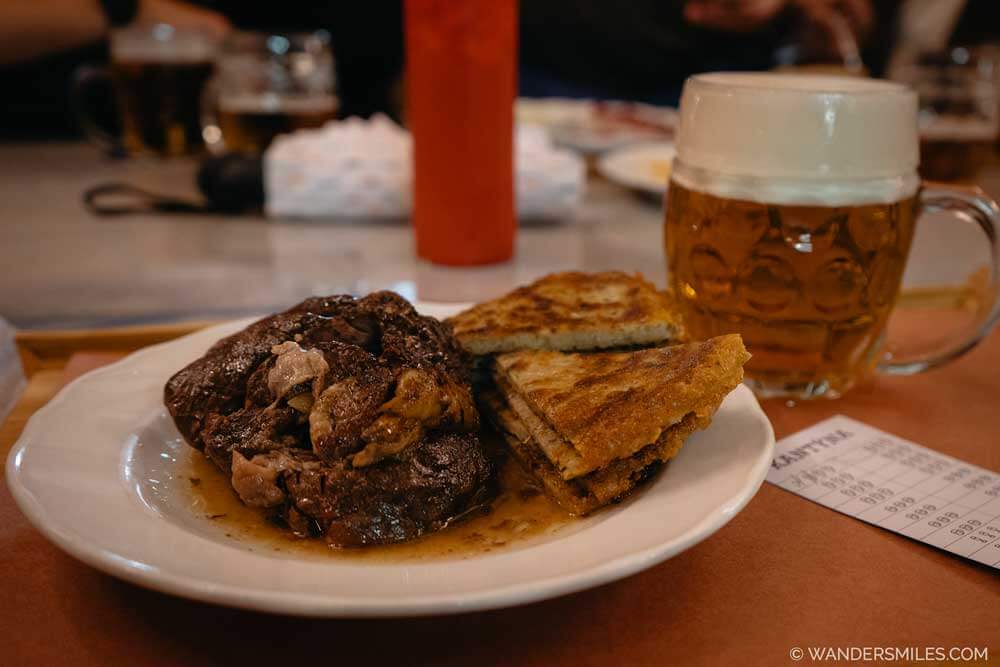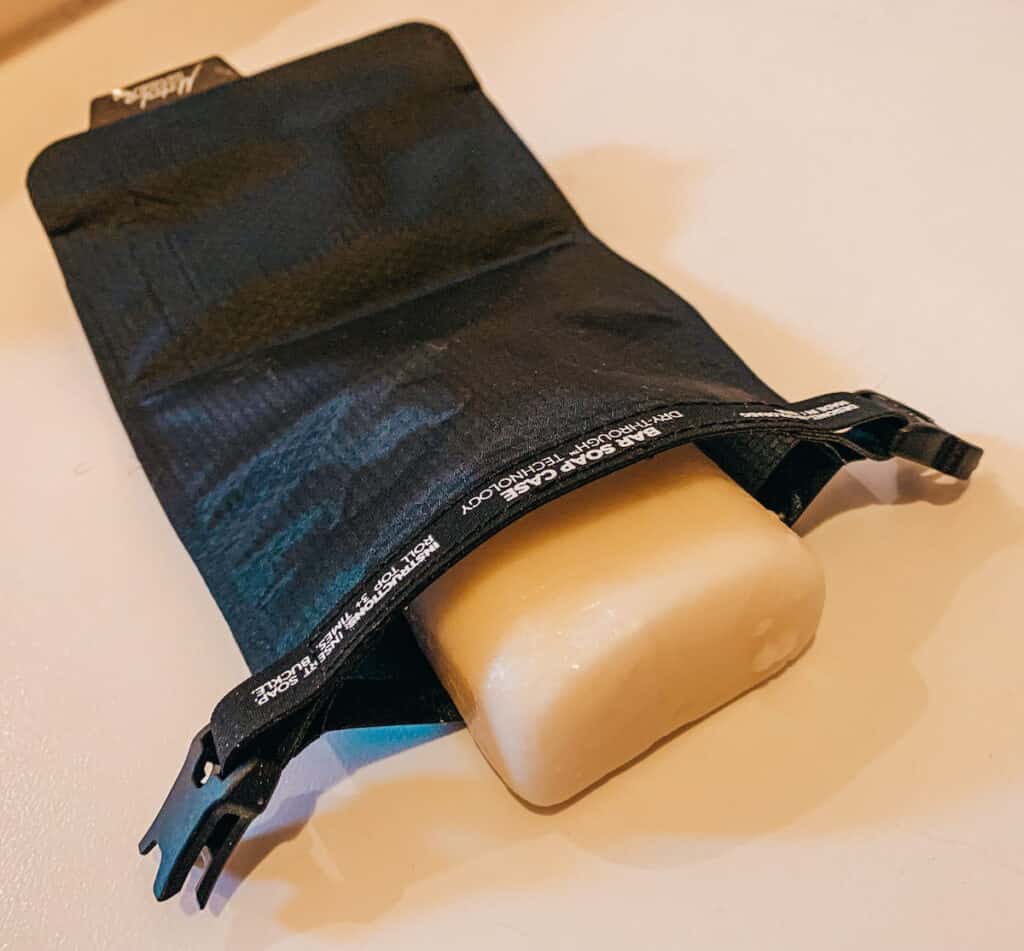NISHEL Travel Toiletry Bag for women, Portable Hanging Organizer for Full-Sized Shampoo, Conditioner, Brushes Set, Makeup Accessories, Large Size, Pink
$20.99 (as of December 3, 2024 15:58 GMT +00:00 - More infoProduct prices and availability are accurate as of the date/time indicated and are subject to change. Any price and availability information displayed on [relevant Amazon Site(s), as applicable] at the time of purchase will apply to the purchase of this product.)Escape the ordinary and immerse yourself in the magical beauty of Joshua Tree National Park, California. As the sun sets and darkness descends upon the desert landscape, find yourself captivated by a celestial display of stars above. Set up your camp under the vast expanse of the night sky, allowing the twinkling lights to envelop your senses and ignite your imagination. Every moment spent in this breathtaking wilderness is an opportunity to connect with nature, discover hidden wonders, and experience an adventure like no other. So pack your sleeping bag, leave behind the noise of the city, and embark on a journey that will leave you in awe of the mesmerizing beauty that lies beneath the stars of Joshua Tree National Park.
1. Introduction to Joshua Tree National Park
Location and size of the park
Joshua Tree National Park is located in southern California, spanning both the Mojave and Colorado Deserts. It is situated just a few hours east of Los Angeles and covers an expansive area of approximately 800,000 acres. The park is bordered by the cities of Twentynine Palms to the north, Joshua Tree to the west, and Indio to the southeast.
Ecological significance
This unique national park is known for its distinct desert ecosystem, characterized by the iconic Joshua Trees that dot the landscape. Joshua Trees are members of the agave family and are native exclusively to the Mojave Desert. The park is home to a diverse range of plants and animals that have adapted to the harsh desert environment, including the elusive desert tortoise, bighorn sheep, and numerous species of lizards and birds.
Interesting facts about the park
One fascinating fact about Joshua Tree National Park is that it was designated as a national monument by President Franklin D. Roosevelt in 1936 and then later upgraded to a national park by Congress in 1994. The park derives its name from the unique Joshua Tree, which was named by Mormon settlers who believed it resembled the biblical figure Joshua reaching his arms towards the sky.
2. Camping in Joshua Tree National Park
Available campgrounds
Joshua Tree National Park offers a variety of campgrounds to suit every camper’s needs. There are nine campgrounds within the park, with a total of over 500 individual campsites. Black Rock, Belle, and Cottonwood campgrounds are the three campgrounds that offer reservation services, while the rest operate on a first-come, first-served basis. Each campground provides a different experience, with amenities ranging from basic pit toilets to fire rings and picnic tables.
Reservation process
To ensure a spot at one of the reservable campgrounds, it is advisable to make a reservation in advance. Reservations for Black Rock and Indian Cove campgrounds can be made online through the National Recreation Reservation Service website or by calling their toll-free number. It is important to note that reservations for these campgrounds can only be made up to six months in advance and are highly sought after, especially during peak camping seasons.
Cost and fees
The cost of camping in Joshua Tree National Park varies depending on the campground and the season. The nightly fees range from $15 to $25 per site, and there may be additional fees for amenities such as electrical hookups. Entrance fees to the park also apply and range from $15 to $30 per vehicle, depending on the time of year. It is recommended to check the official park website or contact the park directly for the most up-to-date and accurate information regarding fees.
3. Best Time to Camp in the Park
Ideal seasons for camping
The best time to camp in Joshua Tree National Park is during the spring and fall seasons, when temperatures are most pleasant and the park is less crowded. Spring, particularly the months of March to May, offers mild temperatures and the opportunity to witness the breathtaking wildflower blooms that blanket the desert floor. Fall, from October to November, provides cooler weather and the chance to experience the stunning fall colors of the park’s foliage.
Weather conditions
It is vital to be prepared for the extreme weather conditions that can occur in Joshua Tree National Park. Summers are scorching hot, with temperatures often exceeding 100 degrees Fahrenheit, making camping uncomfortable and potentially dangerous. Winters, on the other hand, can be quite cold, with temperatures dropping below freezing at night. Be sure to pack appropriate clothing and gear to protect against both extreme heat and cold.
Avoiding crowds
To have a more peaceful and intimate camping experience, it is advisable to avoid visiting Joshua Tree National Park during weekends and holidays, as these times tend to be the busiest. Additionally, arriving early in the morning or late in the afternoon can help you secure a campsite before they fill up. Exploring the lesser-known areas of the park can also provide a sense of solitude and tranquility amidst the vast desert landscape.
4. Equipment and Essential Supplies
Tents and sleeping bags
When camping in Joshua Tree National Park, it is essential to have a reliable tent and sleeping bag to protect you from the elements. The desert nights can be surprisingly cold, so it is important to choose a sleeping bag with the appropriate temperature rating and layer clothing accordingly. A sturdy, well-ventilated tent will provide shelter from wind and potential desert critters, ensuring a comfortable and restful night’s sleep.
Cooking and dining essentials
Prepare for campfire cooking by bringing along a camp stove or grill, as open fires are only permitted in designated fire rings. Pack a variety of cookware, including pots, pans, utensils, and plates, as well as food storage containers to keep your provisions secure. Don’t forget to stock up on non-perishable foods, snacks, and plenty of water to stay hydrated during your stay.
Clothing and personal items
When it comes to clothing, dress in layers to accommodate the fluctuating temperatures of the desert. Lightweight, breathable clothing is recommended for daytime activities, while warmer layers should be added for cooler evenings. Sunscreen, a hat, and sunglasses are essential for protecting yourself from the intense desert sun, and insect repellent can also come in handy to ward off pesky bugs. Don’t forget to pack personal items such as toiletries, medications, and a first aid kit for any unforeseen emergencies.
5. Safety Tips for Camping
Wildlife encounters
While exploring Joshua Tree National Park, you may encounter various wildlife species, including rattlesnakes, scorpions, and coyotes. It is important to maintain a safe distance and respect their natural habitats. Keep your campsite clean and free of food scraps to minimize the risk of attracting wildlife. Be cautious when hiking and climbing, as some desert creatures may be camouflaged in their surroundings. Familiarize yourself with the park’s guidelines on wildlife safety and always exercise caution and common sense.
Fire safety precautions
As an arid environment, fire safety is of utmost importance in Joshua Tree National Park. Only build fires in designated fire rings and never leave them unattended. Ensure that the fire is completely extinguished before leaving the campsite or retiring for the night. It is always a good idea to have a fire extinguisher or a bucket of water nearby in case of emergencies.
Navigation and communication
Navigating through the expansive desert landscape of Joshua Tree National Park can be challenging, especially for first-time visitors. It is essential to carry a detailed map of the park and a compass to help you find your way. Additionally, a GPS device or a smartphone with a reliable offline map application can provide valuable assistance. While cell phone reception may be limited or nonexistent in certain areas, it is still important to have a fully charged phone with you in case of emergencies.
6. Activities and Attractions in the Park
Hiking and rock climbing
Joshua Tree National Park offers an abundance of hiking trails for all levels of fitness and experience. From leisurely walks through the desert flora to challenging scrambles up massive boulder formations, there is something for everyone. Joshua Tree is also a world-renowned destination for rock climbing, with thousands of unique formations and routes to explore. Whether you are a seasoned rock climber or a beginner, the park offers numerous opportunities for adventure and exploration.
Stargazing and night photography
The clear desert skies of Joshua Tree National Park provide a breathtaking backdrop for stargazing and night photography. With minimal light pollution, the park is a prime location for observing celestial wonders. During the new moon phase, the absence of moonlight allows for optimal stargazing conditions, revealing a dazzling array of stars, planets, and even the Milky Way. Don’t forget to bring your camera and tripod to capture stunning long-exposure images of the night sky.
Wildflower blooms and desert flora
Springtime in Joshua Tree National Park brings with it a vibrant display of wildflower blooms. The desert floor transforms into a blanket of colorful blossoms, as various species of flowers burst into full bloom. Visitors can witness the beauty of desert botanicals such as the desert marigold, beavertail cactus, and of course, the iconic Joshua Tree. Exploring the park’s diverse flora is a sensory experience like no other, offering a glimpse into the resilience and adaptability of desert plants.
7. Exploring Hidden Gems
Cholla Cactus Garden
Located in the Pinto Basin, the Cholla Cactus Garden is a hidden gem within Joshua Tree National Park. This unique landscape is home to a dense concentration of cholla cacti, also known as “jumping cholla” due to their tendency to cling to passersby. A short stroll through the garden allows visitors to observe these peculiar cacti up close and marvel at their needle-like spines and vibrant yellow flowers. The golden hour provides the perfect lighting for capturing stunning photographs of this enchanting desert oasis.
Keys View lookout
For breathtaking panoramic views of the park, a visit to Keys View is an absolute must. This lookout point sits atop the Little San Bernardino Mountains, offering a sweeping vista of the Coachella Valley, the Salton Sea, and even the San Andreas Fault. On a clear day, the view stretches as far as Mexico and provides a stunning perspective of the diverse landscapes within Joshua Tree National Park. Sunset is a particularly magical time to visit, as the sky erupts in a dazzling display of colors.
Barker Dam Trail
The Barker Dam Trail presents an opportunity to explore an important historical and natural site within the park. The trail leads to a small reservoir, built by early cattle ranchers, which served as a vital water source for Native Americans and early settlers. Along the way, visitors can view ancient petroglyphs etched into the rocks, offering a glimpse into the rich cultural history of the region. This leisurely hike is also an excellent chance to spot wildlife, such as desert bighorn sheep and a variety of bird species.
8. Nearby Accommodations and Services
Hotels and lodges
For those who prefer not to camp, Joshua Tree National Park is surrounded by several hotels and lodges that offer comfortable accommodations. From rustic desert lodges to modern resorts, there are options to suit various preferences and budgets. Staying in nearby accommodations allows visitors to explore the park during the day and return to the comforts of a cozy bed and hot shower at night.
Restaurants and grocery stores
While the park does not have any restaurants or grocery stores within its boundaries, there are plenty of dining options and stores in the nearby towns of Joshua Tree and Twentynine Palms. Whether you’re in the mood for a casual meal or a gourmet dining experience, you’ll find a range of cuisines to satisfy your taste buds. Stocking up on fresh produce and supplies from grocery stores allows you to prepare your meals while camping or pick up any essentials you may have forgotten.
Visitor centers and guided tours
Joshua Tree National Park is equipped with visitor centers that provide valuable information on the park’s history, geology, flora, and fauna. Knowledgeable park rangers are available to answer questions and offer guidance for making the most of your visit. Additionally, the park offers guided tours led by experienced naturalists, allowing visitors to delve deeper into the park’s unique attractions and gain insight into its ecological significance.
9. Environmental Conservation and Leave No Trace Principles
Minimizing impact on nature
As visitors to Joshua Tree National Park, it is our responsibility to minimize our impact on the delicate desert ecosystem. Stay on designated trails to reduce soil erosion and prevent damage to fragile vegetation. Avoid picking or damaging plants, as they play a crucial role in maintaining the balance of the desert ecosystem. Be conscious of your surroundings and treat the park with the care and respect it deserves.
Proper waste disposal
Dispose of waste properly by utilizing designated trash receptacles or carrying out any trash you generate during your stay. It is essential to leave the park as you found it, ensuring that no trash or litter is left behind. If nature calls while camping, be sure to follow the park’s guidelines on human waste disposal, such as utilizing pit toilets or burying waste at least six inches deep and 200 feet away from water sources and campsites.
Respecting wildlife
While observing wildlife is a thrilling part of any visit to Joshua Tree National Park, it is crucial to do so responsibly. Keep a safe distance from animals and avoid feeding them, as this can disrupt their natural behaviors and lead to negative consequences for both the animals and their habitats. Remember that the park is their home, and we are merely visitors who should admire them from a distance and allow them to thrive undisturbed.
10. Personal Experiences and Tips
Hear from experienced campers
We reached out to experienced campers who have had the opportunity to camp in Joshua Tree National Park, and here are some of their insights:
- “One of the best tips I can give is to bring a headlamp for exploring the park at night. The stars are so incredible, and it’s really amazing to experience the desert at night.”
- “Be sure to pack enough water, especially if you’re camping during the hotter months. Dehydration can creep up on you quickly, so always have a water bottle on hand.”
- “Don’t forget to bring a good pair of hiking boots. The trails in Joshua Tree can be rocky and uneven, so having proper footwear is essential for a comfortable hiking experience.”
Campfire recipes and cooking tips
Cooking over a campfire is a quintessential part of the camping experience. Here are a few campfire recipes and cooking tips to enhance your culinary adventures in Joshua Tree National Park:
- Campfire Chili: Brown ground beef with onions and garlic in a dutch oven over the fire. Add canned tomatoes, kidney beans, chili powder, cumin, and salt. Let simmer until flavors meld together for a hearty and delicious chili.
- Foil Packet Dinners: Place seasoned meat (chicken, steak, or fish) and vegetables (potatoes, carrots, and onions) in individual foil packets. Cook over the campfire for a flavorful and easy one-packet meal.
- Cooking Tips: Make sure your fire has burned down to hot coals before placing your cookware on the fire. Use a grate or a tripod to hold pots and pans over the flames. Keep a close eye on the food, as cooking times may vary due to the intensity of the fire.
Recommended hiking trails
When it comes to choosing hiking trails in Joshua Tree National Park, here are a few recommendations from seasoned hikers:
- Hidden Valley Trail: This one-mile loop takes you through a stunning boulder-strewn valley, offering a glimpse into the unique rock formations and diverse plant life of the park.
- Ryan Mountain Trail: A moderately strenuous 3-mile roundtrip hike that rewards hikers with breathtaking panoramic views of the Joshua Tree National Park and surrounding desert landscapes.
- Lost Palms Oasis Trail: This challenging 7.2-mile trek takes you deep into the desert, leading to a hidden palm oasis surrounded by towering rock formations. The trail showcases the striking contrast between the harsh desert environment and the lush oasis.
By following these tips and recommendations, you can embark on a captivating camping adventure in Joshua Tree National Park, immersing yourself in the beauty of the desert and creating memories that will last a lifetime. Remember to always respect and preserve the natural wonders of the park, ensuring that future generations can enjoy its splendor as well. Happy camping!







